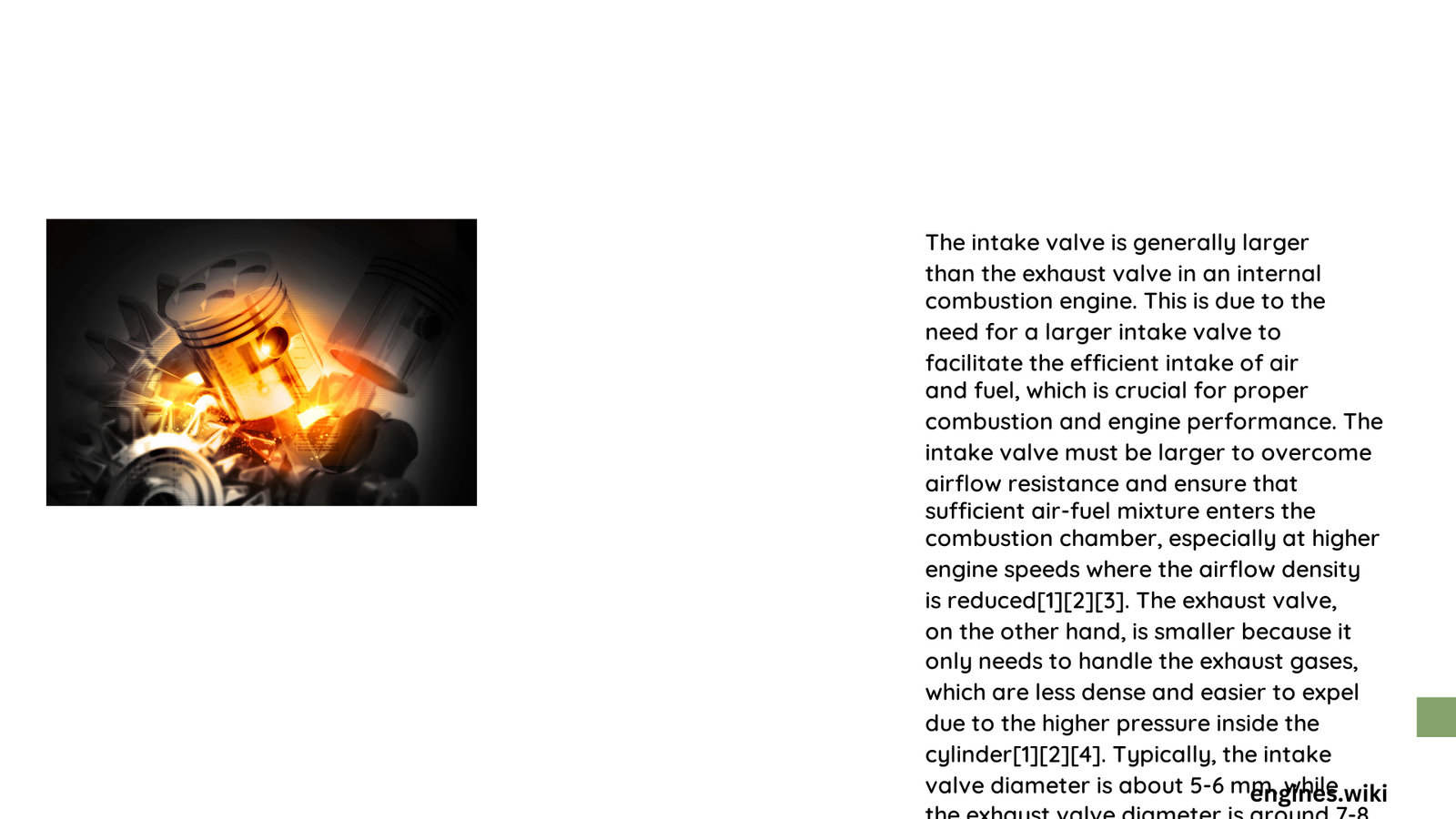In internal combustion engines, intake valves are consistently larger than exhaust valves, designed to optimize airflow and engine performance. This size difference is critical for efficient air-fuel mixture intake and exhaust gas expulsion, with intake valves typically ranging from 30mm to 52mm, while exhaust valves measure between 25mm to 40mm across various engine configurations.
Why Are Intake Valves Larger?
Intake valves require more diameter to facilitate superior air and fuel mixture flow into combustion chambers. The larger size enables:
- Enhanced volumetric efficiency
- Improved engine breathing capabilities
- Increased potential for power generation
How Do Valve Sizes Vary Across Engine Types?
| Engine Type | Intake Valve Diameter | Exhaust Valve Diameter |
|---|---|---|
| V6 Engine | 40-45mm | 35-40mm |
| V8 Engine | 50-55mm | 37-42mm |
| Turbocharged Engine | 35-40mm | 30-35mm |
What Factors Determine Valve Size?

Several critical factors influence valve dimensions:
- Engine Performance Requirements
- High-performance engines demand larger intake valves
-
Racing engines prioritize maximum airflow potential
-
Mechanical Constraints
- Cylinder head design limitations
- Piston and cylinder bore clearances
- Valve angle and positioning
Detailed Valve Size Exploration
Valve Diameter in Popular Engine Models
LS3 V8 Engine Specifications:
– Intake Valves: 54.6mm (2.15 inches)
– Exhaust Valves: 39.4mm (1.55 inches)
Small-Block Chevy V8 Variations:
– Intake Valves: 51.3mm – 57.2mm (2.02 – 2.25 inches)
– Exhaust Valves: 40.6mm – 44.5mm (1.6 – 1.75 inches)
Technical Considerations for Valve Sizing
Valve size selection involves complex engineering trade-offs:
- Larger intake valves improve high-RPM performance
- Smaller valves offer better low-end torque
- Packaging constraints limit maximum valve dimensions
Challenges in Valve Design
- Clearance between valves and pistons
- Material strength requirements
- Thermal management
- Weight considerations for valve train dynamics
Practical Implications of Valve Size
The intake valve’s larger diameter directly impacts:
– Combustion efficiency
– Engine breathing characteristics
– Potential horsepower and torque output
Performance Optimization Strategies
- Precision valve sizing
- Advanced cylinder head design
- Lightweight valve materials
- Optimized valve timing mechanisms
Conclusion
Intake valves are consistently larger than exhaust valves in internal combustion engines, typically ranging 30-52mm compared to exhaust valves’ 25-40mm. This deliberate design ensures optimal engine performance, airflow efficiency, and combustion dynamics.
